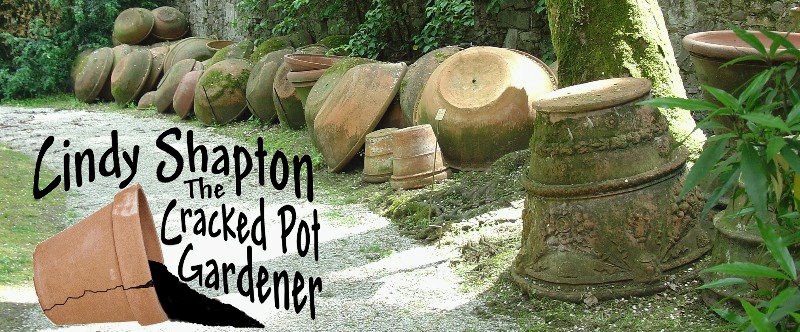 How many times have you heard that play on words? Sorry, just seemed appropriate this morning. I have been enjoying my thyme this year in the gardens. As I took a brief inventory I realized I have lots of the stuff and many varieties.
How many times have you heard that play on words? Sorry, just seemed appropriate this morning. I have been enjoying my thyme this year in the gardens. As I took a brief inventory I realized I have lots of the stuff and many varieties.I wish I would have made more permanent markers (if there really is such a thing) when I planted all the different varieties. I don’t mean to be a collector of thymes but I never miss an opportunity to purchase or grow from seed in the greenhouse a variety I don’t have.
Thyme is a wonderful Mediterranean plant that loves sunshine and good drainage. There are hundreds of varieties with different growing habits, fragrances and flavors. Thymes have a range of bloom times and colors, ranging from white to pink to reddish and purple.
Thyme plants are broken down into two main groups - upright clumpers or ground hugging creepers.
Usually the more upright varieties are used for cooking and medicinal applications. French, English, Lemon, Mother-of-thyme are just a smattering of upright varieties. Just for fun search out some of the more unusual like Orange, Lavender, Oregano or Pink chintz.
Creeping thymes are lovely between pavers, along sidewalks or on rooftops. In England I have seen ground hugging thymes used in lawns as a substitute for grass and on stone benches in the garden. These plants are pretty tough and are fun to use where they get stepped on occasionally to release the scent into the air and make any visit to the garden a sensory pleasure. Wooly, Alba, and Red creeping thymes are some varieties to try.
Thyme is a good companion in the kitchen garden to cucumbers, cabbage and tomatoes. The strong scent helps to discourage would-be pests while calling in honey bees to help pollinate crops. It appears to inhibit powdery mildew as well.
 I like to use different varieties throughout my landscape to provide a long window of blooms for the bees. Thyme does well in pots, I add it to my kitchen pot gardens.
I like to use different varieties throughout my landscape to provide a long window of blooms for the bees. Thyme does well in pots, I add it to my kitchen pot gardens.As with any woody herb, the upright varieties like to be trimmed after it blooms. Thyme often browns out in the center after it is a year or three old. Sprinkle some potting soil in the center and watch it start to leaf out again.
Thymol, which comes from thyme’s essential oil, is a strong antiseptic that is used in mouthwashes and toothpastes. Thyme tea is a wonderful expectorant when you have a cold to help loosen the chest. It has also been used for intestinal worms, urinary tract infections and to disinfect wounds.
Thyme is also a good cleanser for oil skin. It can be used in hair rinses and in the bath with oats to soften skin.
It is easy to preserve thyme for later use by cutting small bouquets just as they start to come into bloom. Hang these little bunches upside down in a well ventilated area out of direct sunlight. When dry run the stems between your fingers and thumb to strip the tiny leaves onto a paper plate. This makes it easy to pour into a jar for storage. Label and place in the cupboard for best flavor retention.
Use excess thyme in wreaths, sleep pillows, potpourri. Cut fresh for small flower arrangements or tussie mussies.
In the kitchen snip fresh thyme into salads, dressings, dips, marinades, soups, steamed vegetables (I especially love it on summer squash). It is tasty on beef and snipped fresh on chicken while grilling.


2 comments:
Hi Cindy,
Kenny Meeks here.
Do you know of a group in Franklin that gathers to share/trade vegetables from their gardens?
Have a good day!
Hey Kenney,
I don't know of any such group but it is an interesting idea. Two weeks ago I had such a bounty of summer squash I was considering a squash ministry! I believe Grace Works excepts veggies to give to folks who need food.
Maybe trading vegetables and giving away extra veggies would be a great project to start at church?
I'm enjoying seeing and hearing so many veggie tales this year - Hi to Susie and the fam! cindy :)
Post a Comment